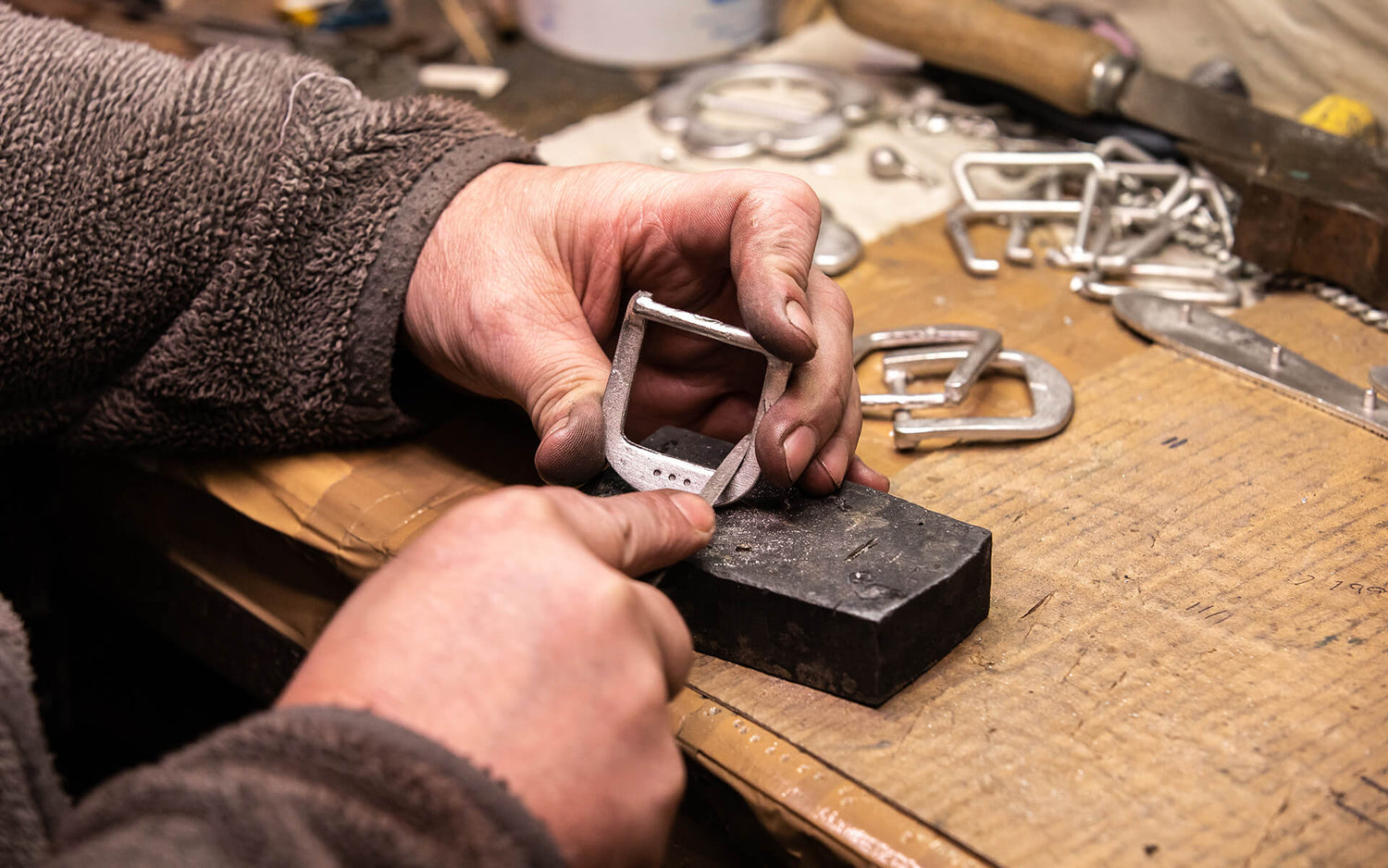Last month, we published a Journal article that went into detail on everything you need to know about our leather. If you haven’t read it yet, we recommend doing so as this month, we’re looking at the second key component of our process: our buckles.
We’ve said it before, and we’ll say it again: here, at Awling, we’re resolutely committed to our 100% Made in England approach towards manufacturing and much like the strips of vegetable-tanned leather our craftspeople carefully carve from premium-quality hides, so too are the pewter and brass buckles we produce.
A few months ago, we visited the workshop that makes our pewter buckles – an example of this is our Pavilion belt in pitch black leather. This takes place in one of the country's oldest foundries in Cheshire. It’s charming in its rustic nature and it ignites all of your senses into action – it’s a nondescript but curious-looking building that’s loud thanks to all of the constantly rumbling machinery, whilst the oddly pleasingly metallic smells that protrude from the workshop grab your attention.

Overall, the foundry is about as old-school as you can get – it’s a humble place of work where a small number of hardened hands produce what we believe to be the best pewter buckles in the world. So, we’re immensely proud to eventually deboss our three-dot logo into them before they’re then combined with our vegetable-tanned leather.
Regardless of whether it’s made from brass or pewter, every kind of buckle begins life in the exact same way, which is with a pen and paper. Awling is a design-driven brand, and our team meticulously sketch out an array of marginally different designs that would challenge you at a game of spot the difference, before they’re then transferred into a computer. Whilst the overall process is traditional, the foundry isn’t living in the Stone Ages, as the computer then allows us to use a 3D printer to help us create the moulds.

The 3D printer has, in some ways, revolutionised the buckle-making process as it sped up production and streamlined the overall design to a state of perfection. That said, we often create them by hand by modifying existing buckles to create something totally new and our craftspeople do this by carefully adding touches of clay to an existing buckle and once the clay is dry, they then file away at it to alter the dimensions.
This plastic buckle that’s achieved through 3D printing is key to the entire process, as it’s used to create the mould that will provide us with the master key. Once we’re happy with the design, we create a rubber cast that will produce six individual and identical buckles. Molten pewter, which boils at 250 degrees Celsius, is carefully poured then poured into the centre of a two-piece circular rubber mould which is spun at high speed that encourages the pewter particles to become solid. Following this step, the buckles all require a good bit of maintenance, which involves removing any excess (which is then recycled), and cleaning and polishing. Once they look in good condition, they’re placed within what’s called a Vibro polishing machine. Inside, our freshly-made pewter buckles spin around for six hours (brass buckles require a minimum of 24 hours) amongst small, blue pebbles that slowly remove any fine lines and soften the curves of the buckle.

At this stage, the buckles still require another two steps before they are finished, which is a hard mop followed by a soft mop. Essentially, they are two machines similar to a sander, but with a much more gentle finish that leaves the buckles glistening in the dim lighting of the workshop. Finally, the prong – a crucial component, of course – is carefully bent around the buckle and hammered tight.
Once our workshop has completed making the number of units that we’ve ordered, they’re shipped back to the leather workshop in Mowbray where they’re assembled together.
More on that soon.




Leave a comment
This site is protected by hCaptcha and the hCaptcha Privacy Policy and Terms of Service apply.